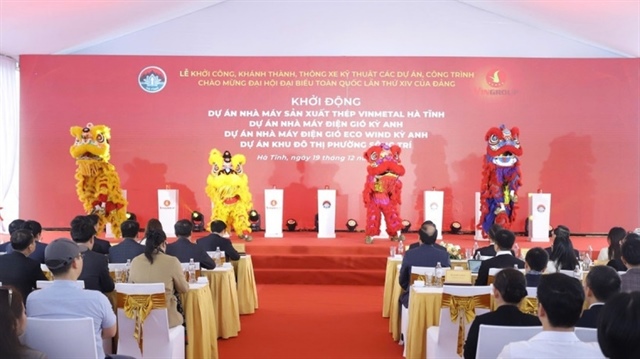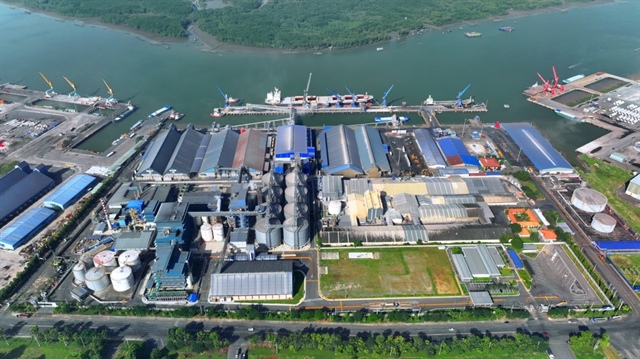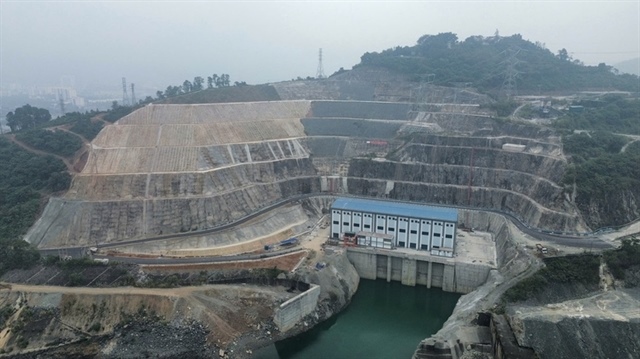MARD submits plan to develop shrimp industry
MARD submits plan to develop shrimp industry
The Ministry of Agriculture and Rural Development (MARD) has submitted to the Prime Minister a national action plan for the development of the shrimp industry through 2025.

The plan, according to the ministry’s General Department of Fishery, looks to turn the shrimp industry into a key economic sector with sustainable development that is adaptable to climate change and friendly to the environment.
At the same time, the plan hopes to improve the quality, efficiency of production, and competitiveness of Vietnamese shrimp products, in a bid to benefit farmers, businesses and the country’s economy.
To reach those targets, the ministry will review and upgrade irrigation infrastructures, key traffic and the availability of electricity in regions in which shrimp are raised, based upon modern industrial models; and re-organise small production facilities to become cooperatives for creating larger regions that will connect with enterprises supplying input materials and consuming products within the value chain.
Also, the ministry will research and ensure that before 2025 the industry will offer a variety of shrimp that grow quickly and are free of diseases. It will also research the technology of shrimp feed production to actively produce this product at home.
The industry will apply scientific and technical advances and modern management measures to shrimp production regions, and modern technologies for processing shrimp to increase the volume of value-added products meeting food hygiene and safety standards, as well as the demands of importing countries.
In addition, the ministry will study local and global markets in terms of consumer tastes, product categories, market demand and competition with other shrimp exporting countries to build an efficient market expansion plan. It will also improve the advertising of brands and build geographical indications for Viet Nam’s shrimp products in key export markets, reported Dau tu newspaper.
According to the action plan, the domestic shrimp industry is expected to gain US$4.5-5 billion in export value and record an annual average growth of 9.5-12 per cent in 2017-20. In 2021-25, a hi-tech shrimp industry and large-scale eco-shrimp farming areas will be developed with infrastructure and technical services having synchronous, efficient and sustainable investment. The shrimp industry expects to reach the goals of $10 billion in export value and an average growth of 12-14 per cent per year.
The total area rearing brackish water shrimp is estimated to reach 710,000ha, with total output of 850,000 tonnes of shrimp during 2017-20, and expand to 750,000ha and 1.1 million tonnes of output in the period from 2020-25.The ministry will review the plan for regions rearing shrimp using industrial models and hi-tech procedures, especially in the Cuu Long Delta region and central coastal region, to increase average productivity by 1 million tonnes per hectare.
At the same time, it will build and develop ecological shrimp areas with large scales in the Cuu Long Delta region, concentrated in Ca Mau, Kien Giang, Bac Lieu, Soc Trang and Tra Vinh provinces.
Ecological centres for rearing tiger prawn (shrimp-forest and shrimp-rice) will be built in Ca Mau Province. Giant fresh water prawns will be reared in Dong Thap, An Giang, Ca Mau, Kien Giang, Soc Trang, Bac Lieu, Tra Vinh and Ben Tre provinces. Further, lobsters will be raised in Khanh Hoa, Phu Yen and Binh Dinh provinces.
The ministry will have trade promotions, expand export markets and develop post-harvest preservation to assure high export values.
In 2016, Viet Nam gained a total export value for shrimp of $3.1 billion, a year-on-year increase of 4 per cent, said the General Department of Fishery. This year, the export value was expected to continue to grow.




















